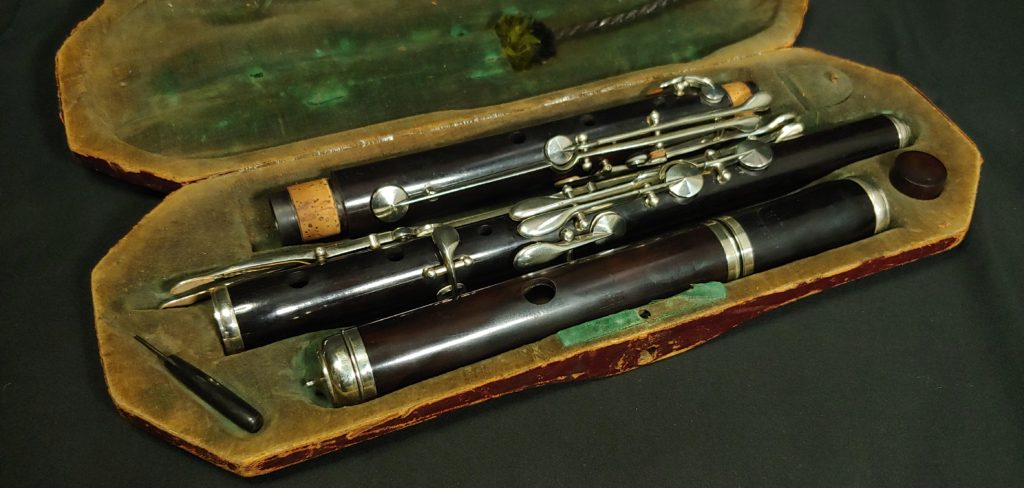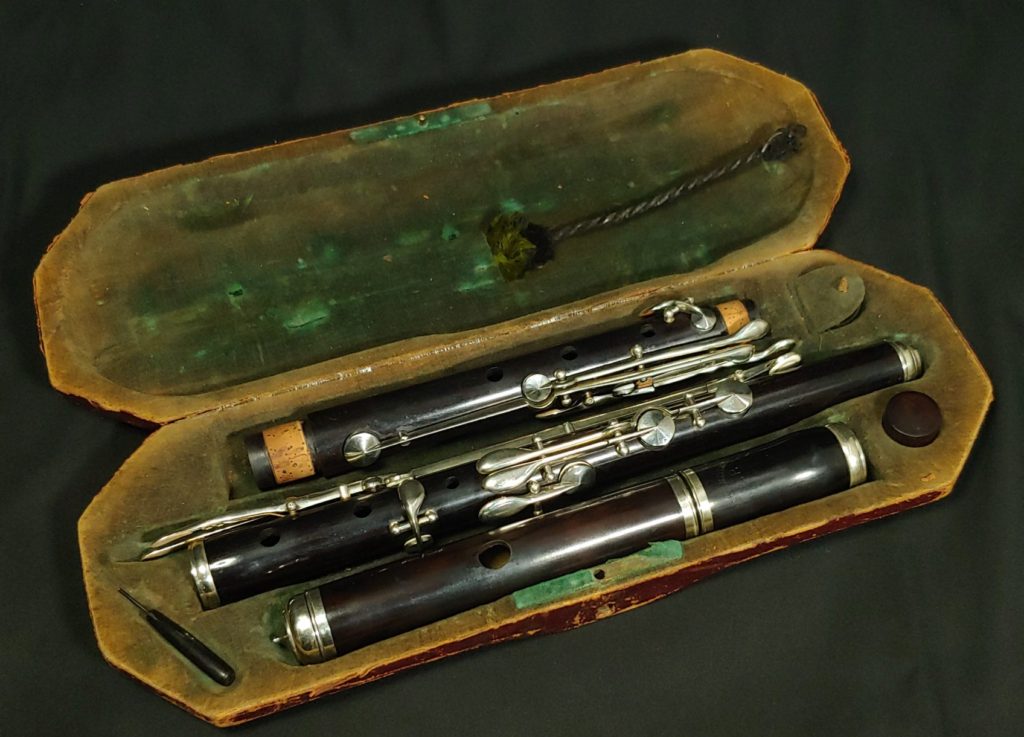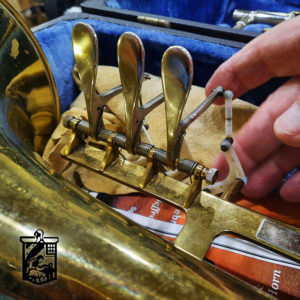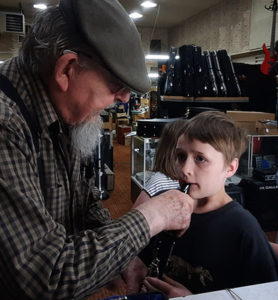History of the Meyer System Flute, Comparison of the Boehm system and explanation of the restoration of the 1870 Meyer System Flute
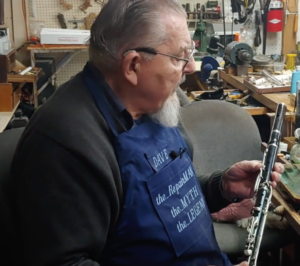 Earlier this year, Dave finished a restoration of a 1870 Meyer system flute (see the video below.) The Meyer System flute is one of the earlier Flutes, it had open holes and was classified as a 6 keyed flute. The particular model that Dave restored was made by Nach Meyer, the inventor of the Meyer system. It is marked LP which indicates that it is Low Pitch, and that it was made for export to the United States. The difficulty in playing, the Meyer System flute is that in the key of C you need to have very long fingers, and then when you would reach for the low C it would pull the 3rd finger up off the hole and it wouldn’t play. You would have to be very very diligent in playing.
Earlier this year, Dave finished a restoration of a 1870 Meyer system flute (see the video below.) The Meyer System flute is one of the earlier Flutes, it had open holes and was classified as a 6 keyed flute. The particular model that Dave restored was made by Nach Meyer, the inventor of the Meyer system. It is marked LP which indicates that it is Low Pitch, and that it was made for export to the United States. The difficulty in playing, the Meyer System flute is that in the key of C you need to have very long fingers, and then when you would reach for the low C it would pull the 3rd finger up off the hole and it wouldn’t play. You would have to be very very diligent in playing.
During the 1860s the Boehm system was being developed in Europe by Theobald Boehm, and it was a plateau key, and his design is pretty much the same with the exception of the modern flutes have what we call a closed G sharp which makes it much more logical to play then some of the previous 1897 models. But having plateau keys and the larger open holes it played more accurately in tune and was accepted by many in the late 1800s. But the Meyer system was still trying to compete; so they put out marvelously made instruments of granadilla wood with the nickel keys. They were very very desirable and had a very pleasant sound, but mechanically, they were just not as functional for all people.
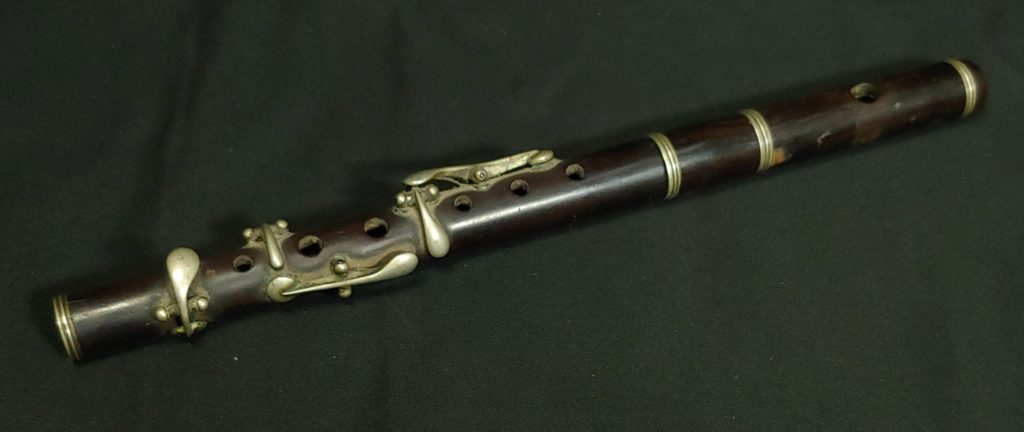 Shown above is a Meyer system Piccolo pitched in the key of Db, imported to the United States, to play “Stars and Stripes Forever”, in the John Philip Sousa band. It has the nickel keys and the granadilla wood and the pads that are put in with beeswax the same as the flute that Dave restored, the restored flute looked just like the Meyer system piccolo before he started the restoration. To restore the flute you need to know how they were originally built. They didn’t use screw pins at that time the Meyer system was developed, they have what they called push pins and so you have to carefully drive the push pin-out and then polish the keys and polish the body. Dave filled the cracks in the back and at the end of the flute to seal it so that it would play properly. He then re-padded it.
Shown above is a Meyer system Piccolo pitched in the key of Db, imported to the United States, to play “Stars and Stripes Forever”, in the John Philip Sousa band. It has the nickel keys and the granadilla wood and the pads that are put in with beeswax the same as the flute that Dave restored, the restored flute looked just like the Meyer system piccolo before he started the restoration. To restore the flute you need to know how they were originally built. They didn’t use screw pins at that time the Meyer system was developed, they have what they called push pins and so you have to carefully drive the push pin-out and then polish the keys and polish the body. Dave filled the cracks in the back and at the end of the flute to seal it so that it would play properly. He then re-padded it.
Inside the case are the original pads from 1870 but they were old and deteriorated. Dave put in white kid pads that are very substantial and seal very well so the flute can play clear down to the low B if you can hold the C. There are other models that were closer to the little finger and more easily covered but this one required a very long little finger.
